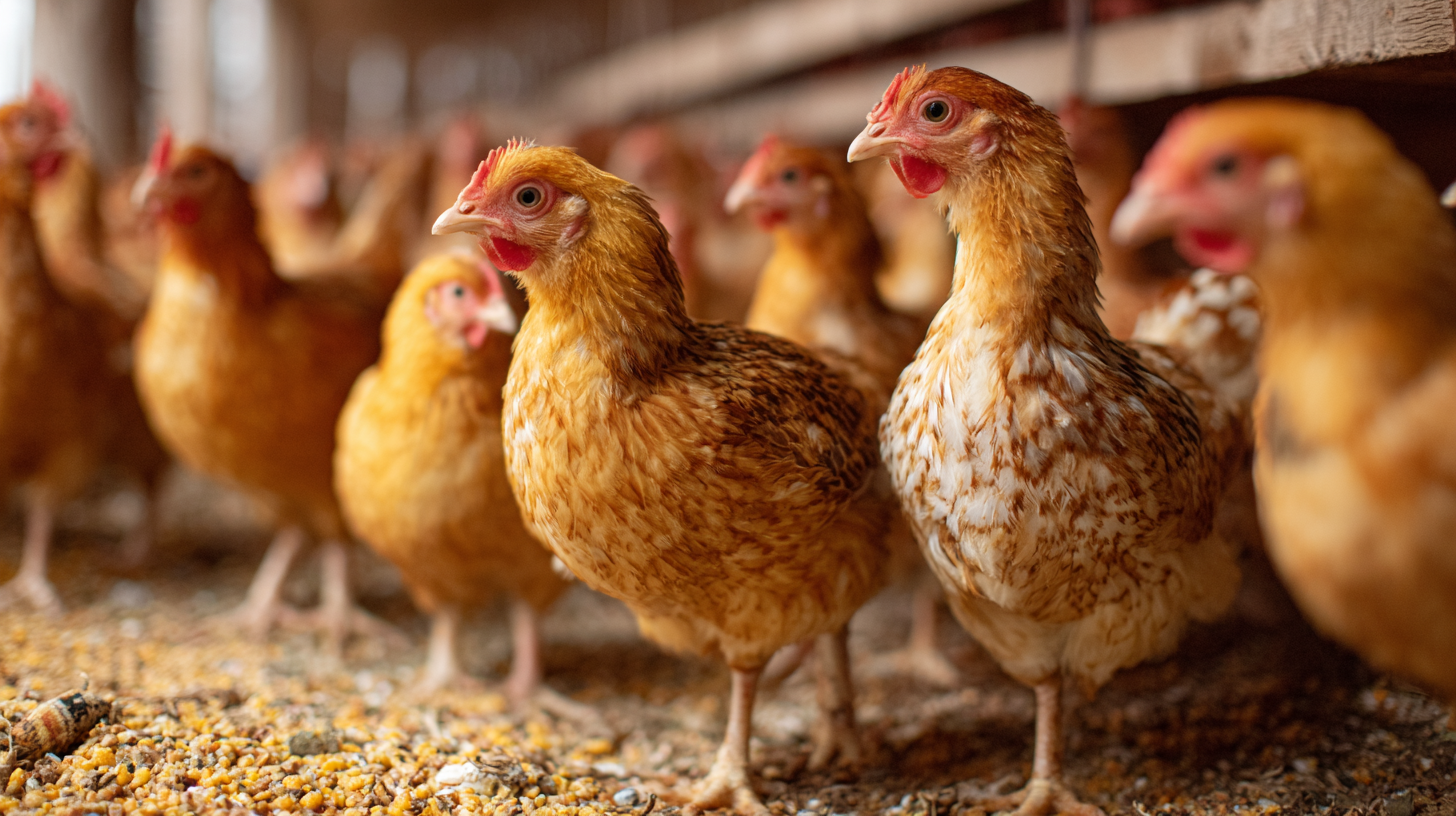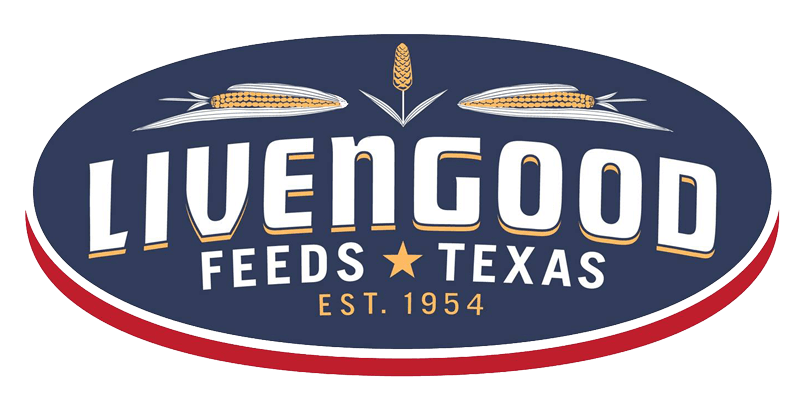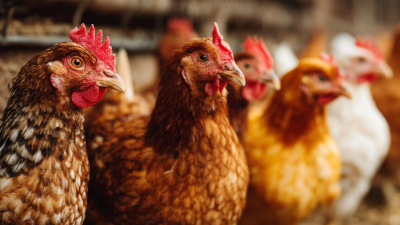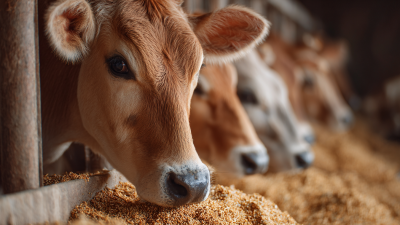Top 10 Best Bulk Poultry Feed Options for Maximum Productivity and Healthy Flocks
In the ever-evolving landscape of poultry farming, the choice of feed plays a pivotal role in determining the overall productivity and health of flocks. Bulk poultry feed is not only a cost-effective solution but also crucial for achieving optimal growth rates, egg production, and overall flock vitality. According to the American Feed Industry Association, the poultry sector requires approximately 40% of the total feed production in the United States, underscoring the significance of high-quality feed options. The right formulation can significantly impact weight gain, feed conversion ratios, and resilience against diseases, making the selection of bulk poultry feed an essential consideration for farmers aiming to enhance their operational efficiency and profitability.
Furthermore, as the demand for poultry products continues to rise globally, driven by population growth and increasing per capita meat consumption — projected to reach an average of 36 kg by 2025 according to the Food and Agriculture Organization — poultry producers are encouraged to adopt innovative feed solutions. This shift towards precision nutrition and tailored feed mixes ensures that they meet specific dietary needs while maximizing the economic returns on feed investments. Thus, identifying the best bulk poultry feed options is not merely a choice but an imperative for those committed to maintaining healthy and productive flocks.

Benefits of Choosing the Right Bulk Poultry Feed for Production
Choosing the right bulk poultry feed is crucial for optimizing production and ensuring the health of your flocks. According to the American Feed Industry Association, poultry production accounted for over 65% of the total US livestock feed market in 2020, highlighting the importance of selecting high-quality feed. The right feed enhances growth rates, improves egg production, and reduces feed waste, ultimately leading to a more sustainable operation. Studies indicate that optimized poultry rations can increase feed efficiency by up to 20%, translating into significant cost savings for farmers.

Moreover, the nutritional composition of poultry feed is essential for flock health. A research report from the National Poultry Technology Center emphasizes that a balanced diet rich in key nutrients, such as proteins, vitamins, and minerals, not only supports growth but also strengthens the immune system of birds. Healthy flocks are less susceptible to diseases, resulting in lower veterinary costs and higher overall productivity. By investing in quality bulk poultry feed, producers can achieve better weight gain, improved egg quality, and superior flock performance, ultimately securing a profitable and resilient poultry operation.
Key Nutritional Components in Quality Poultry Feed
The poultry feed market is poised for substantial growth, driven by increasing demands for high-quality animal products and nutritional enhancements. The U.S. animal feed market is projected to reach $50.2716 billion in 2024, with an expected rise to $51.6289 billion by 2025, illustrating a robust growth trajectory. This expansion is feeding into the broader feed additives market, which is anticipated to increase from $37.93 billion in 2024 to about $53.49 billion by 2032, highlighting the rising importance of nutritional components that enhance flock health and productivity.
Key nutritional components in poultry feed include proteins, vitamins, and minerals, which are essential for optimal growth and egg production. As farmers aim for higher productivity, the focus on quality ingredients becomes paramount. Furthermore, with the increasing prevalence of large-scale livestock production, the demand for specialized and balanced feeds is critical to meet the nutritional needs of poultry. The compound feed sector alone is set to grow alongside these trends, reflecting a compound annual growth rate of 6.4% from 2025 to 2033, fueled by an escalating livestock population and the need for sustainable farming practices.
Comparative Analysis of Top Brands in Bulk Poultry Feed
When it comes to selecting the best bulk poultry feed, a comparative analysis of top brands reveals key differences in nutritional content, pricing, and production techniques. Leading brands such as Purina, Nutrena, and Southern States each offer unique formulations tailored to specific stages of poultry development. For instance, Purina’s Flock Raiser provides a balanced diet rich in protein, making it an excellent choice for growers aiming for maximum productivity during the critical growth phase. Conversely, Nutrena emphasizes digestibility and energy efficiency in its feeds, which can lead to better overall feed conversion rates.

Another important factor is ingredient sourcing and sustainability practices. Brands like Cargill focus on responsibly sourced components, which not only support animal health but also cater to the growing consumer demand for sustainable farming practices. Consumers are increasingly leaning towards feeds that align with their environmental values, making it essential for brands to highlight their commitment to sustainability. In contrast, smaller local brands might offer more tailored solutions that address regional dietary needs, though they may lack the comprehensive research backing that larger corporations provide. Each option presents distinct advantages and potential drawbacks, highlighting the importance of careful consideration when choosing the ideal feed for healthy flocks and enhanced productivity.
Sustainable Sourcing Practices for Healthy Flocks
In modern poultry farming, implementing sustainable sourcing practices is critical for ensuring healthy flocks and maximizing productivity. Recent trends show that younger consumers are increasingly focused on sustainability and emotional value in their purchase decisions. Reports indicate that around 70% of millennials prioritize ethically sourced products, reflecting a significant shift in consumer behavior that encourages poultry producers to adopt eco-friendly practices.
Utilizing ingredients from sustainable sources not only meets the demand for responsibly produced food but also enhances the nutritional quality of poultry feed. Research has shown that feeds containing natural, organic ingredients can improve the health and growth rates of birds, leading to a 15-20% increase in productivity. Furthermore, incorporating practices such as local sourcing minimizes transportation emissions and supports local economies, which resonates well with the values of the younger generations. By integrating sustainable practices into poultry feed production, farmers can create a positive impact both on their bottom line and the environment, fostering healthier flocks and satisfied consumers.
Tips for Storing and Managing Bulk Poultry Feed Efficiently
Storing and managing bulk poultry feed efficiently is crucial for maintaining the health of your flock and optimizing production. According to the American Feed Industry Association, improper feed storage can lead to a significant decrease in feed quality, with moisture and pests being the primary concerns. It is essential to keep feed in a dry, cool place, ideally in airtight containers, to prevent spoilage and protect against contamination. Regular inspection of feed bins for leaks or signs of pests can help mitigate these risks.
Moreover, effective feed management practices can greatly enhance feeding efficiency. The National Chicken Council recommends implementing a first-in, first-out (FIFO) strategy to ensure older feed is used before newer stock. This practice aids in maintaining nutrient integrity, as feed nutrients can degrade over time. Additionally, record-keeping of feed usage and inventory can help poultry producers make informed decisions about their purchases, ensuring that they always have high-quality feed on hand while minimizing waste. Adopting these storage and management techniques can lead to healthier flocks and improved productivity.


